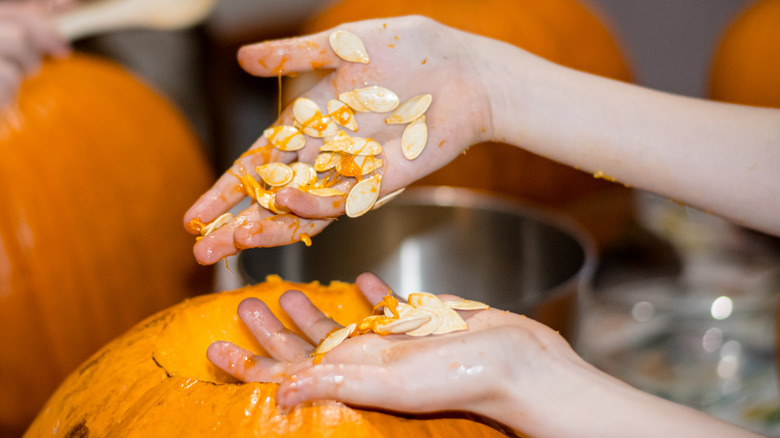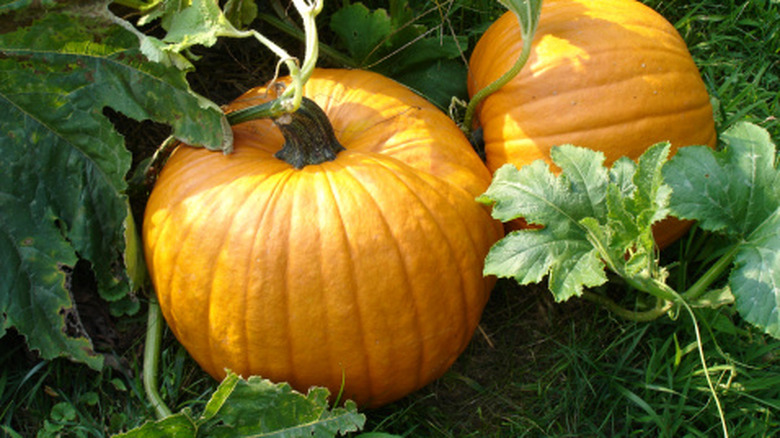The Best Type Of Pumpkin To Grow For Seed Saving
We tend to value things that have passed the test of time and served their function well for centuries. A versatile pumpkin that performs equally well as a carved jack-o'-lantern or in a pie is one such entity. The 'Connecticut Field' pumpkin (Cucurbita pepo) is considered an heirloom vegetable, having been around since the early 18th century when it was cultivated by colonial settlers, primarily for its edible seeds. This pumpkin's consistent performance over centuries makes it appealing for seed saving, and with 100 to 300 seeds per ounce of weight, it provides plenty of seeds to save for next year.
This classic pumpkin goes by a number of other names, including Big Tom. This venerable squash is classified as a large pumpkin, weighing 18 to 25 pounds. It displays nicely when left whole or carved as a jack-o'-lantern, thanks to its nice flat bottom (just be sure you know the DIY solution that makes pumpkins last longer). The 'Connecticut Field' pumpkin can also be substituted for any recipe that lists winter squash as an ingredient. Fun fact: 'Connecticut Field' is the only pumpkin variety that Libby uses in its canned pumpkin.
Save seeds from versatile 'Connecticut Field' pumpkin
Interestingly, 'Connecticut Field' shares its botanical species with several other squashes, including zucchini and acorn squash. 'Connecticut Field' can cross-pollinate with zucchini and other members of the Cucurbita pepo species, though cross-pollination will not influence the flavor, appearance, or form of the fruit unless the seeds are harvested and planted the following season.
Because these pumpkins are insect-pollinated, they may cross-pollinate with any compatible plant close to them. If you plan to save the seeds to grow more 'Connecticut Field' next year, the ideal solution is to isolate your pumpkin plants from other compatible plants (like zucchini) so they can't cross-pollinate or to have just one 'Connecticut Field' pumpkin plant. You can self-pollinate a plant with a cotton swab; you'll find a longer stalk for male blossoms and a small fruit at the base on female blossoms.
To harvest seeds from a 'Connecticut Field' pumpkin, first choose the largest, roundest, and healthiest pumpkin. Cut the pumpkin in half and remove the pulp and seeds. Place these "guts" in a sink and separate the seeds from fleshy parts – but don't throw out the pumpkin guts; use them to feed the birds in your yard. Rinse the seeds well in a colander, then lay them out to dry for about a month. You can also save pumpkin seeds to plant next year with a window screen hack to make the drying process more effective.

